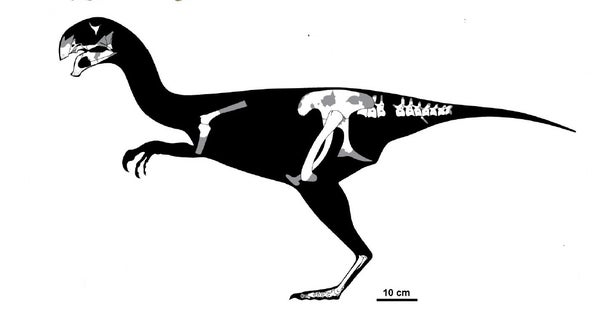This article was published in Scientific American’s former blog network and reflects the views of the author, not necessarily those of Scientific American
We don’t know very much about baby dinosaurs. From the perspective of sheer numbers, this might not seem to make much sense. Non-avian dinosaurs laid clutches of multiple eggs. There were far more hatchling dinosaurs than there ever were adults. And yet, when we look to the fossil record, they seem to be invisible. Take Triceratops for example. This famous dinosaur is known from dozens of skulls and specimens, yet what we understand about the first year of this dinosaur’s life primarily comes from a single specimen.
The answer for the discrepancy is one of subtraction. Studies of dinosaur life histories show that the first year was literally do or die for hatchlings. It didn’t help that baby dinosaurs were basically Mesozoic junk food, a dietary staple for carnivores and other creatures come hatching season. And then there’s the question of fossilization - there seems to have been a bias against the preservation of small dinosaurs - and that of discovery, given that for a century paleontologists have focused on big, impressive, showstopping specimens. It’s only been relatively recently that the search for pint-sized dinosaurs has really kicked up.
All of that is what makes a baby dinosaur described by paleontologist Sungjin Lee and colleagues so wonderful. Not only is it a new species - named Gobiraptor minutus by the experts - but the bones provide a look at the early life of the strange, bird-like oviraptorosaurs.
On supporting science journalism
If you're enjoying this article, consider supporting our award-winning journalism by subscribing. By purchasing a subscription you are helping to ensure the future of impactful stories about the discoveries and ideas shaping our world today.
The fossil, labeled MPC-D 102/111, was found in the roughly 75 million year old rock of southern Mongolia. The bones include parts of the skull as well as the arms, hips, legs, foot, and tail, all of which allowed Lee and coauthors to come up with a rough reconstruction of the entire animal. It was a real little foot, about the size of a large duck, and had toothless jaws that the dinosaur probably used to crush through the shells of insects and other small food items.
But how did the paleontologists know this dinosaur was a baby? This is an important question, especially given that the dinosaur is named as a new species. The answer, Lee and colleagues demonstrate, is in the femur - or thigh bone - of Gobiraptor. The microscopic structure of the dinosaur’s bones indicate that it was growing rapidly, and the specimen lacks any of the growth rings that paleontologists often use to estimate how many years an individual dinosaur had been alive. This was a young dinosaur, likely less than a year old.
What remains to be seen is how Gobiraptor grew up. Most dinosaurs uncovered by paleontologists are relatively mature animals, illustrating what the species looked like as adults. The extreme ends of the dinosaur’s life - babies and aged individuals - are rare. We need those bookends to appreciate just how much dinosaurs changed as they strode through each season of life. The overwhelming picture is that dinosaurs transformed dramatically between hatching and adulthood, especially in the expression of their ornamentation. (This is why many “dwarf dinosaurs” turned out to be babies of already-known species.) How much Gobiraptor changed will require older specimens for paleontologists to investigate and compare. Given how lucky it is that paleontologists have already uncovered an elusive infant, we may get the answer soon.
